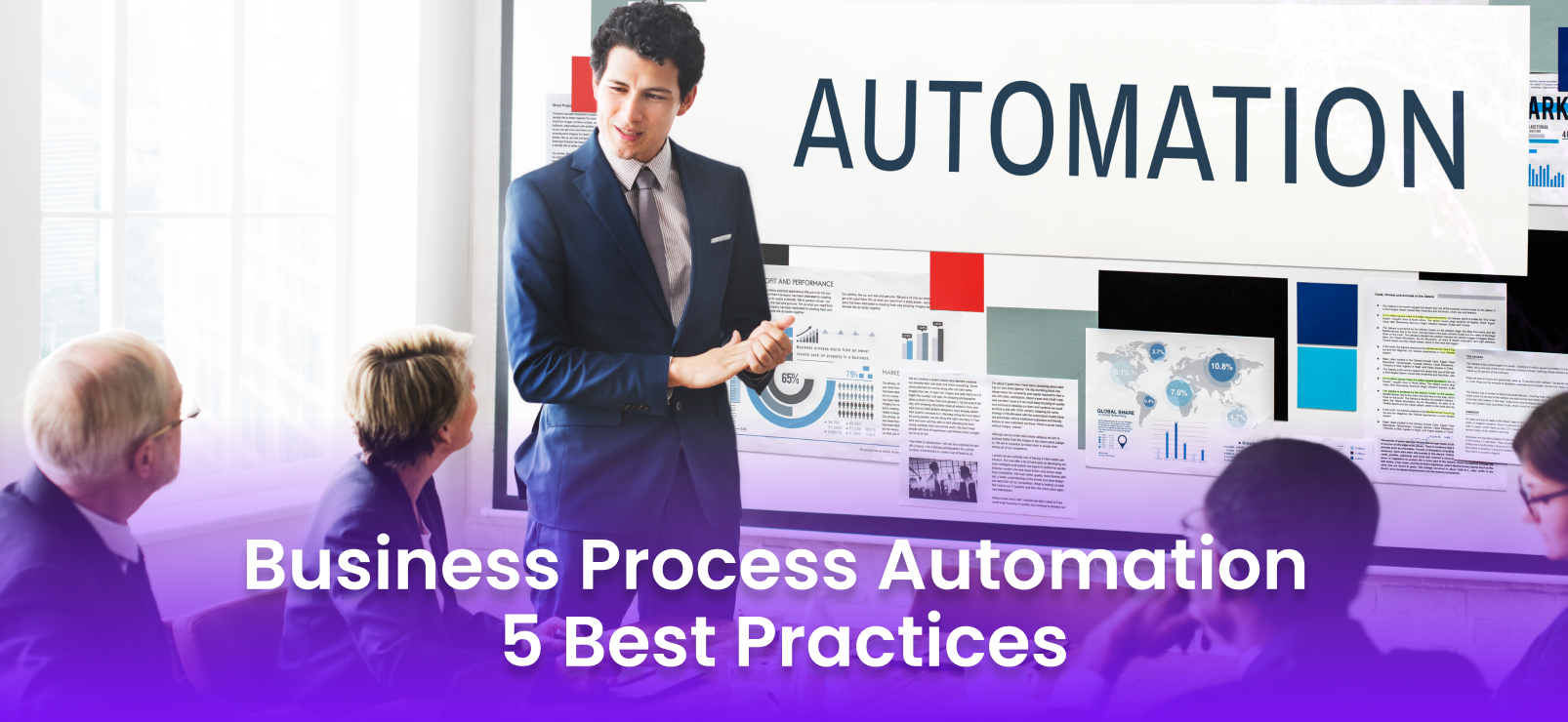Business Process Automation – 5 Best Practices
Business Process Automation (BPA) helps organizations simplify repetitive tasks, enhance efficiency, and reduce human error. With the rising adoption of Artificial Intelligence (AI) and digital transformation, especially in manufacturing, BPA is becoming even more valuable. However, success in BPA requires more than just deploying software; it requires the right backend systems to support automation. Here are five best practices that help you take full advantage of BPA.
-
Understand BPA Terminology
Before employing BPA, it’s important to recognize the key terms. Two key concepts are Robotic Process Automation (RPA) and Intelligent Automation:
- RPA emphasizes automating repetitive tasks such as data entry, scheduling, or order management.
- Intelligent Automation builds on RPA by including AI and machine learning, making automation smarter by evaluating data and learning from trends.
Having a thorough knowledge of these terms helps you align your automation efforts to particular tasks, enhancing efficiency throughout your operations.
-
Don’t Overlook Business Process Management (BPM)
Business Process Management (BPM) is crucial for optimizing workflows earlier to executing automation. BPM offers transparency and visibility into processes, allowing businesses to:
- Recognize inefficiencies
- Identify gaps in data
- Optimize cross-department processes
Organizing and simplifying workflows using BPM lays the foundation for successful BPA, guaranteeing efficient deployment of automation systems that drive ideal outcomes.
-
Start Small, but Think Holistically
It’s significant to begin with detailed automation projects that address instant pain points. For instance, automating inventory management in a manufacturing setting can advance supply chain efficiency. However, it’s crucial to think about the long term. As you automate individual workflows, have an intent to engage with them throughout the organization. A holistic approach ensures that automation efforts are scalable and integrate well into your business strategy.
-
Ensure Quality Data Management
Data is the basis of any BPA system, and its quality is important for efficient automation. If your data is imprecise or unreliable, automation won’t perform optimally. To make sure BPA is successful, it must:
- Keep data precise and up-to-date
- Remove duplicate entries
- Fill in gaps that occurred during data gathering
Proper data management allows your BPA systems to work proficiently and decreases the risk of errors, making automation streamlined and more efficient.
-
Leverage ERP Systems
Enterprise Resource Planning (ERP) systems are crucial for BPA integration. ERPs centralize data from several business units, making it effortless for BPA systems to access and use that information. Key benefits of using an ERP involve:
- Removing duplicate data entry
- Incorporating IoT tools that update data automatically
- Unifying data from numerous departments in one place
ERPs function as the pillar for numerous BPA efforts, ensuring that automation systems have trustworthy and planned data to work with.
Conclusion
Business Process Automation can considerably improve efficiency by simplifying tasks and reducing errors. Understanding the essential terms, implementing Business Process Management (BPM), starting with small projects while maintaining a holistic perspective, ensuring high-quality data management, and utilizing ERP systems are all necessary for optimizing BPA. Following these best practices will assist your business in accomplishing greater productivity and staying competitive in this progressively digital world.
Optimize Workflows! Get Our ERP Software Now
Contact CERP Suite Now!












